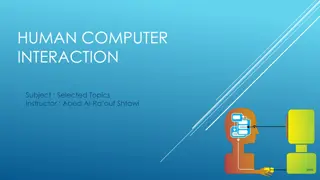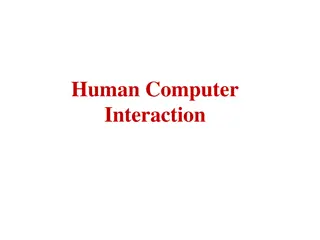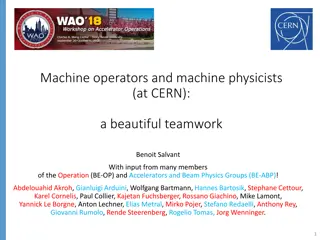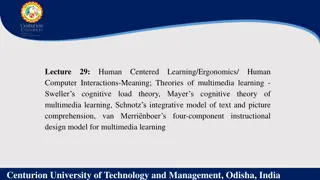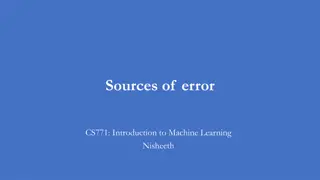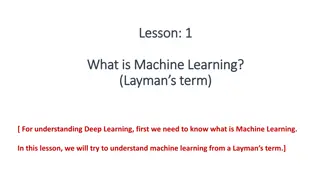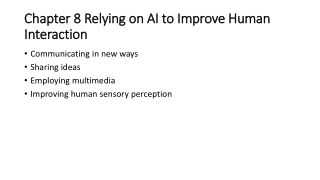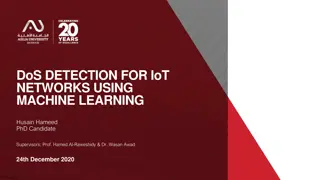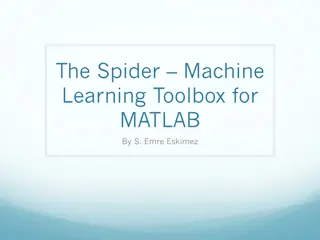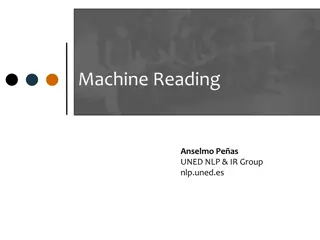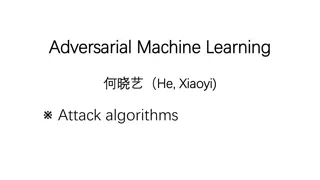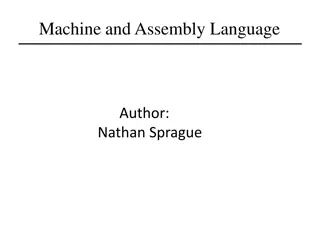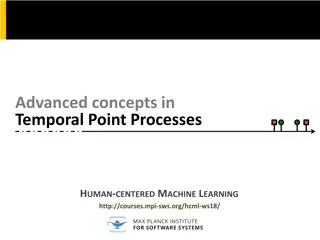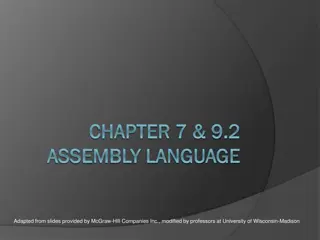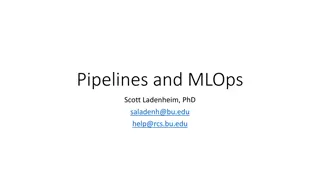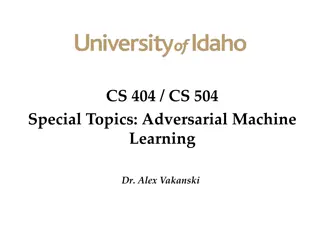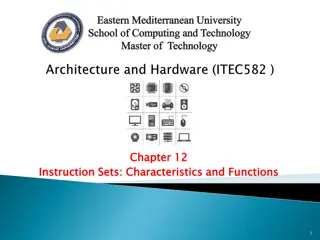Understanding Human-Machine Interaction: A Comprehensive Overview
This comprehensive overview explores the intricacies of human-machine interaction, delving into topics such as output modalities, interacting machines, complex interfaces, real-life applications, examples, neuroplasticity effects, training dynamics, and key concepts in HMI design. Covering a wide array of subjects, from the basics of input devices to advanced technologies like exoskeletons and wearable tech, this content provides valuable insights into the evolving field of HMI.
Download Presentation

Please find below an Image/Link to download the presentation.
The content on the website is provided AS IS for your information and personal use only. It may not be sold, licensed, or shared on other websites without obtaining consent from the author. Download presentation by click this link. If you encounter any issues during the download, it is possible that the publisher has removed the file from their server.
E N D
Presentation Transcript
HUMAN MACHINE INTERACTION Paolo Gallina pgallina@units.it 040 5583829 Ed. C5, first floor
INTRODUCTION Output: - Video - Audio - vibration Examples of Interacting machines Input: - Keyboard - Mouse - Eye tracking - Voice Interface
Interaction can be complex Interface Concept: - Degree of freedom (DoF) DoFMapping
https://www.youtube.com/watch?v=2Ysb-Oko3Bg EXOSCHELETON EXAMPLES
Even simple tools change the our brain (short term neuroplasticity phenomena) Citare da L anima delle macchine, Dedalo ed. Collaborazione con Carlo Fantoni
TRAINING S-Curve or Sigmoid function
-With repetition of almost any motor task, learning occurs, and a person becomes more efficient -measure of skill on the Y axis and number of trials on the X-axis An S-shaped curve of growth levels off because stability is attained, a resource needed for growth is limited, or a ceiling of performance is reached. Quantitative Assessment of Backhoe Operator Skill (book) The S-shaped learning curve is most obvious when someone learns a highly complex task. The initial part of the curve rises slowly as a person becomes familiar with basic components of a skill. The steep ascending phase occurs when there is enough experience with rudiments or simple components to start "putting it all together." See: Research methods in human-computer interaction
ARGOMENTI Introduzione SUB-ARGOMENTI Esempi di macchine interagenti Strategie di progettazione Usabilit e Human-centered interface Human-centered interface, coadattamento Attuatori e riduttori Sensori di forza Sistemi vibrotattili Controlli Interfacce aptiche Interazione meccanica SYLLABUS Interazione visiva visori e telecamere realt virtuale realt aumentata sonificazione Interazione sonora Interazione uomo computer tecnologia indossabile interfacce grafiche Tecnologia persuasiva Macchine anti-edonistiche Da tecnologia persuasiva panoptico Interazione uomo-robot tamagotchi e Clifford Nass cobot uncanny valley empatia artificiale affective computing
2 questions about the program in class Slide presentation about a topic chosen by the student 15 mninutes It will be evaluated: clarity, quality of the presentation, language skills, originality, scientific soundness FINAL TEST






